 John Adams and Thomas Jefferson were the only signers of the Declaration of Independence to become President of the United States, but they certainly weren't the only signers elected to public office in the new federal government. In fact, seven signers were part of the 1st United States Congress (1789-1791), eight including President of the Congress, John Adams. This month, with Election Day fast approaching, we highlight the signers of the Declaration of Independence who became congressmen, vice presidents, and presidents in the new United States.
John Adams and Thomas Jefferson were the only signers of the Declaration of Independence to become President of the United States, but they certainly weren't the only signers elected to public office in the new federal government. In fact, seven signers were part of the 1st United States Congress (1789-1791), eight including President of the Congress, John Adams. This month, with Election Day fast approaching, we highlight the signers of the Declaration of Independence who became congressmen, vice presidents, and presidents in the new United States.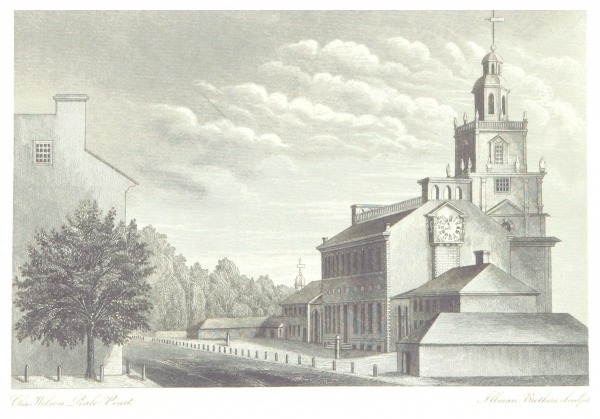
A fun fact to start: The first and second sessions of the 1st US Congress were held in Federal Hall in New York City. From December 1790 through May 1800, Congress met in Congress Hall, adjacent to Independence Hall (then known as the State House), where the Declaration of Independence was signed. In this reproduction of an engraving by Charles Willson Peale, Congress Hall is the building just to the right of the clock on Independence Hall.
Members of the United States House of Representatives
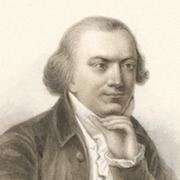
Elbridge Gerry
Massachusetts 3rd District
1789-1793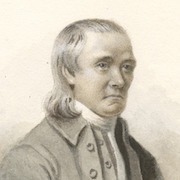
Roger Sherman
Connecticut At-Large District
1789-1791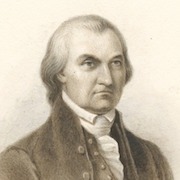
William Floyd
New York 1st District
1789-1791
Abraham Clark
New Jersey At-Large District
1791-1794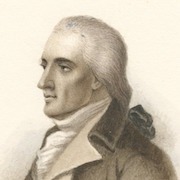
George Clymer
Pennsylvania At-Large District
1789-1791
United States Senators

Roger Sherman
Senator from Connecticut
1791-1793
Robert Morris
Senator from Pennsylvania
1789-1795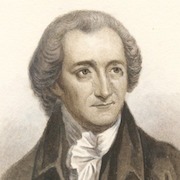
George Read
Senator from Delaware
1789-1793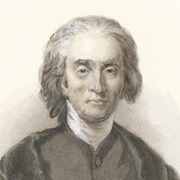
Charles Carroll of Carrollton
Senator from Maryland
1789-1792
Richard Henry Lee
Senator from Virginia
1789-1792
President pro tempore, 1792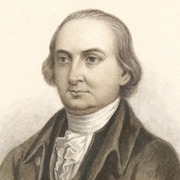
George Walton
Senator from Georgia
1795-1796
Vice President of the United States
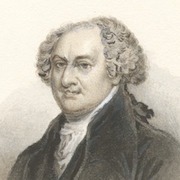
John Adams
2nd Vice President of the United States
President: George Washington
1789-1797
Thomas Jefferson
3rd Vice President of the United States
President: John Adams
1797-1801
Elbridge Gerry
5th Vice President of the United States
President: James Madison
1813-1814
President of the United States

John Adams
2nd President of the United States
1797-1801
Thomas Jefferson
3rd President of the United States
1801-1809
Fun Fact: The 6th and 9th Presidents of the United States were sons of signers of the Declaration of Independence. John Quincy Adams (son of John Adams) was President from 1825-1829, and William Henry Harrison (son of Benjamin Harrison) was President for just one month in 1841, the first President to die in office. William Henry Harrison's grandson (Benjamin Harrison's great-grandson) was the 23rd President of the United States, also named Benjamin Harrison, who served from 1889-1893.
Bonus: Governors
18 signers of the Declaration of Independence governed their respective states, including one signer who governed two different states. Whether acting, short-term, or multi-term, that means 32% of the men who signed the Declaration of Independence would serve as governors during their political careers.

4th Governor of New Hampshire: Josiah Bartlett, 1790-1794
1st and 3rd Governor of Massachusetts: John Hancock, 1780-1785, 1787-1793
4th Governor of Massachusetts: Samuel Adams, 1794-1797
9th Governor of Massachusetts: Elbridge Gerry, 1810-1812
18th Governor of Connecticut: Samuel Huntington, 1786-1796
19th Governor of Connecticut: Oliver Wolcott, 1796-1797
6th President of Pennsylvania: Benjamin Franklin, 1785-1788
2nd Governor of Pennsylvania: Thomas McKean, 1799-1808
2nd President of Delaware: Thomas McKean, 1777
3rd President of Delaware: George Read, 1777-1778
4th President of Delaware: Caesar Rodney, 1778-1781
3rd Governor of Maryland: William Paca, 1782-1785
Governor of Virginia: Thomas Jefferson, 1779-1781
4th Governor of Virginia: Thomas Nelson, Jr., 1781
5th Governor of Virginia: Benjamin Harrison, 1781-1784
39th Governor of South Carolina: Edward Rutledge, 1798-1800
2nd Governor of Georgia: Button Gwinnett, 1777 (acting)
11th Governor of Georgia: Lyman Hall, 1783-1784
17th Governor of Georgia: George Walton, 1789
Notes:
- Fictional President Josiah Bartlet (with two t's) on The West Wing was formerly Governor of New Hampshire, and claimed to be a descendent of Josiah Bartlett (with three t's).
- When Hancock died in office in October 1793, Lieutenant Governor Samuel Adams became Acting Governor.
- Stephen Hopkins, signer of the Declaration of Independence, served as Colonial Governor of Rhode Island from 1755-1757, 1758-1762, 1763-1765, and 1767-1768.
- In 1776, both Pennsylvania and Delaware crafted constitutions where the executive branch was led by a President. With new state constitutions in 1790 and 1792 respectively, they adapted the office to Governor.
- John Dickinson, who argued against the Declaration of Independence, preceded Franklin as 5th President of Pennsylvania (1782-1785) and succeeded Rodney as 5th President of Delaware (1781-1783). Pennsylvania and Delaware had shared a governor as colonies, but Delaware wasn't thrilled when Dickinson was elected as President of Pennsylvania while still President of Delaware. He resigned in January 1783.
- All three signers from Delaware and all three signers from Georgia served as governor of their respective states for a period of time.
Images from the Emmett Collection of Manuscripts, etc. relating to American History, courtesy of the New York Public Library Digital Collections.
By Emily Sneff

